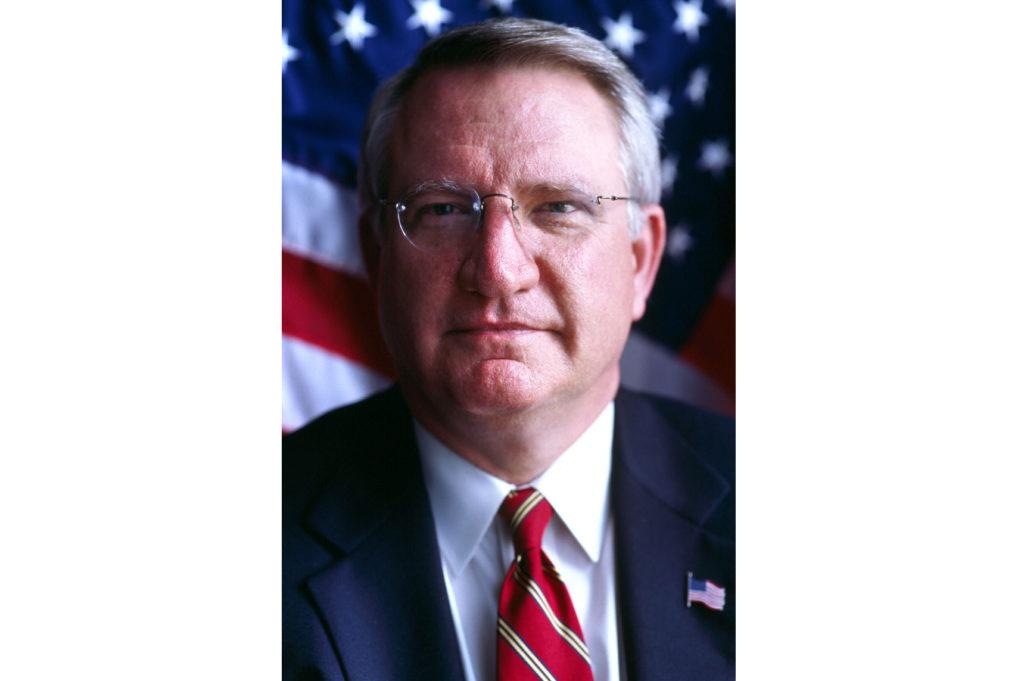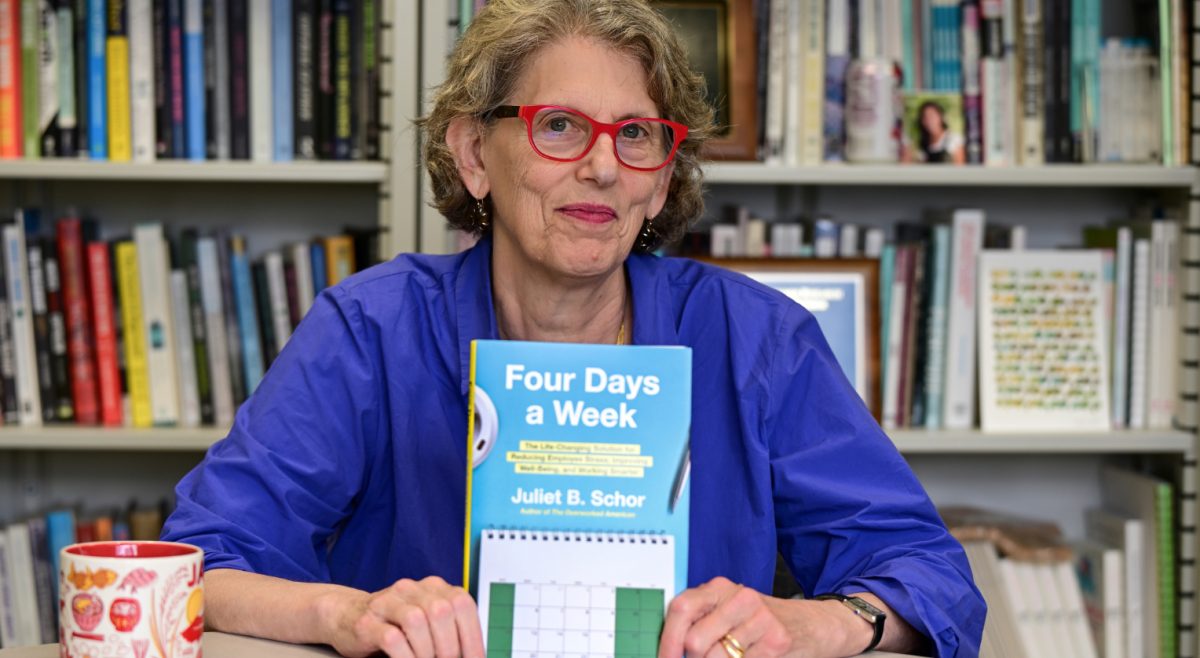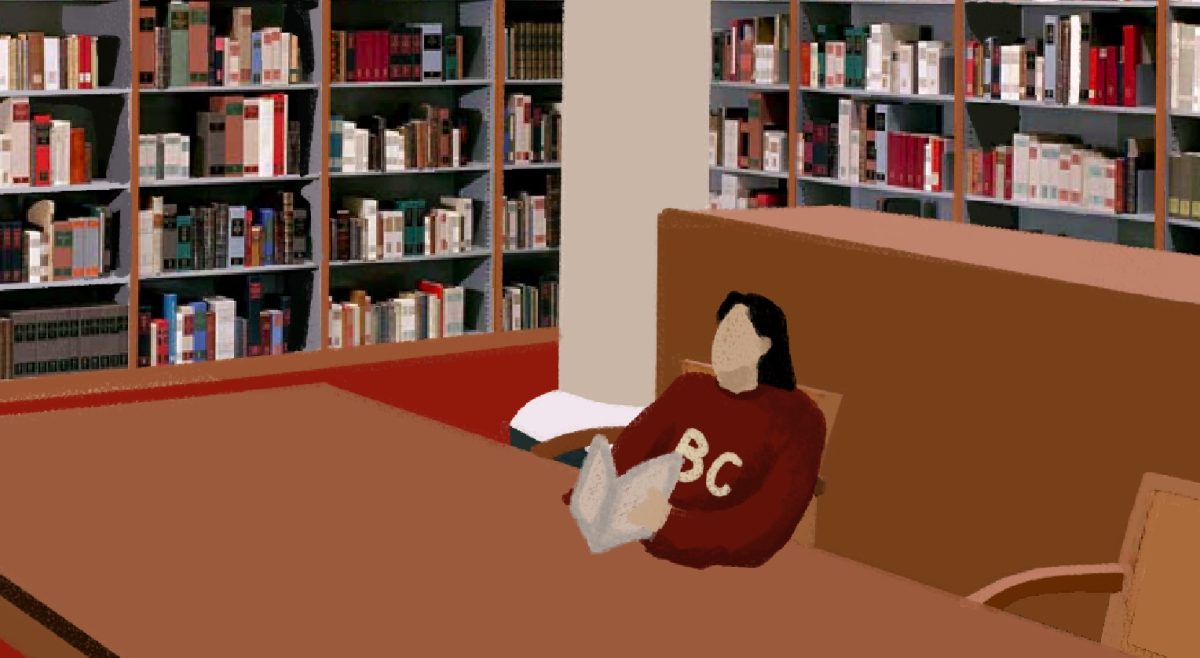From 2001 until the end of the Bush administration in 2008, John P. Walters served as the U.S. “drug czar,” coordinating the nation’s anti-drug efforts and funding through the Office of National Drug Control. During his tenure, teen marijuana use declined 25 percent and teen methamphetamine, ecstasy and LSD use declined over 50 percent. In order to produce such a result, there was a marijuana arrest every 38 seconds in the U.S. during his term. In addition, black people were 3.7 times more likely to be arrested for possession charges than white people, despite using drugs at similar rates, according to the ACLU. After his term, Walters joined the Hudson Institute, a foreign policy think tank in Washington D.C., of which he is now the chief operating officer. On Thursday, April 12, he visited Boston College to discuss the pressing opioid epidemic facing the nation. He sat down with The Heights beforehand and the following is an edited selection of the transcript of a larger conversation.
How did you get your start in politics?
I grew up in a time, when I was a smaller child, the John Kennedy assassination happened. But when I was in high school, I was going to focus on science and math and MLK was assassinated and RFK was assassinated. The civil rights movement was going on, there was a lot of questioning going on and so I became interested in whether I could make a contribution. I initially wanted to do that through the law but then when I went to study as an undergraduate, I found that there were questions I thought I had the answer to–about how politics should work, what was the better and worse order for human beings. I got interested in studying those things.
In graduate school I studied with two American professors that were at Toronto, Alan Bloom and Walter Burns. I was working on a dissertation in political theory comparing Edmund Burke and Alexis de Tocqueville’s works on the French Revolution. My wife was a graduate student in the political science department here at BC. I met some of the people and they asked if I wanted to teach as an adjunct, teaching courses on political theory and American politics and I said “yes” and I started teaching here. In 1982, actually through Walter Burns, I got contacted by a man named William Bennett, who had been selected by Bush to be the chairman of the National Endowment for the Humanities. He wanted young people who cared about undergraduate education, who wanted to refocus a portion of the humanities of endowment on improving college education. I thought the experience in Washington would be helpful, [there was] a tight job market, [and it was] something I was interested in. So I went and one thing led to another, as it sometimes does. He became education secretary for President Reagan after being endowment chairman in 1985. He asked me to come to the education department in 1985 when crack was exploding in the U.S.
Was this at the very beginning of the crack epidemic?
It was in the early half of the epidemic. Cocaine started being a problem in the earlier ’80s but crack was a kind of enhancement and development of the cocaine product. The cartels used it to provide very addictive, very cheap cocaine into our cities, spurring not only huge problems with addiction and all the consequences, including drug-affected infants being born, but also causing huge amounts of violence. And so, when we left the Reagan administration just before it ended, Bennet and I, Congress passed a law that created the Office of National Drug Control Policy, which was globally called the drug czar’s office and that office was going to come into being with the election of the next president, who was H.W. Bush. Bennet and I left government to start a non-for-profit that was going to work on education reform and some drug policy education. After the election, in December, Bush asked Bennet to be the next drug czar. So I went in in December to begin to set up the transition. The public concern wasn’t as bad–well you’re a bit young for 9/11–it wasn’t as bad as 9/11, but it was almost as bad. There were murders. The murder rate in DC last year was probably 130 murders. At that time in DC there were over 400 murders. There were parts of the city, like where I lived, where that wasn’t a problem. But there were parts of the city where someone was being murdered at least a couple times a month, it’s not that big a city. People were desperate to have something done. I was Bennet’s chief of staff and national security advisor. He left after less than two years and I stayed in office until the end of the Bush administration. After that, I began working with philanthropy, working with donors. It was then that Bush’s office called me to talk about the Drug Policy Office in 2001. My approval hearing was scheduled for Sept. 11, 2001, which I did not have because of the attacks. Then my hearing was rescheduled for the beginning of October. After it was completed, but before I was marked up and reported out, anthrax was found in the heart center office building which delayed in further. So I finally took the oath on Dec. 7, 2001. I served in the Drug Policy Office until the election of President Obama and then I joined the Hudson Institute where I am now, a think tank in Washington D.C. focused largely on National Security issues. I didn’t intend to continue to do work on drug policy but the problems have gotten so big, people ask me to testify and do other things.
When you first entered office in 2001, what was the biggest drug problem facing the country?
At that time, the terrorism problem was overarching and there was fear of two things. First, that money from enforcement and intelligence was going to be shifted and drugs were going to be a much greater problem–attention to the problem of drugs would cause more drug use and addiction. But in fact what happened was people became more serious, they saw the dangers to our freedoms and self-destructive behavior became more problematic. Also, a lot of the security we did helped cut off drugs from entering the US–the inspection of airplanes, the border security, the intelligence that we used. In 2001 we were already seeing some of the consequences in the abuse of pharmaceutical opioids: oxycodone, hydrocodone, etc. In addition, we were just starting to see some of the meth problem which peaked while I was in office, but also cocaine was still a problem. We began working with the Colombians to cut the stuff off and with the inauguration in 2002 of President Uribe of Colombia who was a truly terrific and gifted leader, they began to dismantle the cartels, and also through aerial eradication which was highly controversial. By 2006 there was a peak in cocaine production and it started to decline after. It dropped 60 percent.
You mentioned meth also?
Meth grew during that time, started out with large batch production in the U.S. and then that spread to Mexico. Then the outlaw motorcycle gangs [started] making and selling meth. Then small labs of people using cold and allergy medication to make meth, creating all kinds of dangerous by-products. Then we made it so those medicines were kept behind the counter and you had to show a driver’s license to buy it. We weren’t sure about it but we’ve had good results from it. When we left, overall youth drug use dropped 25 percent.
Were there any drugs that youth-use became a problem with?
Steroid use, actually. President Bush felt quite strongly about this. He had been involved with the MLB and was pushed very hard to support some congressional efforts to regulate steroid abuse in MLB. He absolutely rejected that and said ‘the teams need to take responsibility. If the federal government has responsibility then it’s a failure of the federal government. It’s really a failure of them to create programs and to educate and police their own sport. It destroys their own enterprise and they need to do it.’ And so steroid use dropped during that period. He spoke about it in one of his state of the union addresses.
In a piece for Politico, you cited pernicious parenting, domestic abuse, and socioeconomic failure as all problems that affect people besides the drug user. Don’t alcoholics and their families suffer similar consequences?
It doesn’t happen in a vacuum, we’re a society. We’ve had a love-hate relationship with alcohol for a long time, I mean Abraham Lincoln gave a speech to a temperance group about the evils of alcohol. It was bad enough that the country tried to ban it. I think people want to say looking back, ‘well organized crime happened so we repealed it.’ Actually, people wanted to drink. The effects are not good and there’s a lot of violence done by alcoholism, but we’ve tried to live with that. It’s a compromise with some significant harm to society. However, what some want to take from that is, ‘well we allow some harm, why not allow some other harm?’ But the opioid problem is a much larger compromise and poses a greater threat to society. It’s hard to compare addictiveness but I don’t think there’s any question that the current death rate [from opioids] isn’t staggering.
What about marijuana?
What you often hear is ‘heroin, hard drug. Marijuana soft drug.’ What that masks is two things. One, I think there are limits to things like self-report surveys, which under-report people who are addicted because more addicts don’t consider themselves addicts. A little more than half of people who need help for illegal drug use are dependent on marijuana. It’s the single biggest use of treatment need. It was more important than cocaine and heroin combined at the time [that I was in office]. I haven’t seen the recent numbers, though.
Where do you think the roots are for the opioid crisis?
After traveling the world and observing various drug problems, both U.S.-related and not, I’ve come to believe there’s a fundamental misunderstanding of what the problem is about. On an individual level, it is very important for you to pay attention to your family and friends and see a problem when there is one and to support them when they seek treatment. It requires more from us as social beings. There’s confusion on this. Part of that confusion is ‘this is an expression of freedom, you should be able to use drugs and be a heavy user or addicted user–depending on how candid you are with yourself–because that’s part of your freedom.’ That’s not really a definition of freedom. The other thing is, I think we have failed to recognize because we don’t want to see it in this simple a term: This is really about the drugs. The way we need to re-conceptualize this to lower the death toll is to see this as a mass poisoning incident. When there’s more of these substances in society, more will become users, more will become addicted, and more will die from overdoses. And when there’s less of these drugs, it goes down. I believe in treatment. I don’t think there’s another human being who has argued more successfully for more federal money for treatment than me in the course of my government service. But, you can’t treat your way out of this death toll. You can’t create a video tape that tells people not to use. I don’t think this is an awareness of the danger problem. I don’t think this is a problem of people not understanding the consequences. What it is is, we’re flooded with these substances and the backdrop of this is the message that a lot of people use drugs when they’re young, the idea that it’s okay to experiment is embedded in our society. And so we have to face the fact the culture we live in encourages it.
Photo Courtesy of georgewbush-whitehouse.archives.gov







